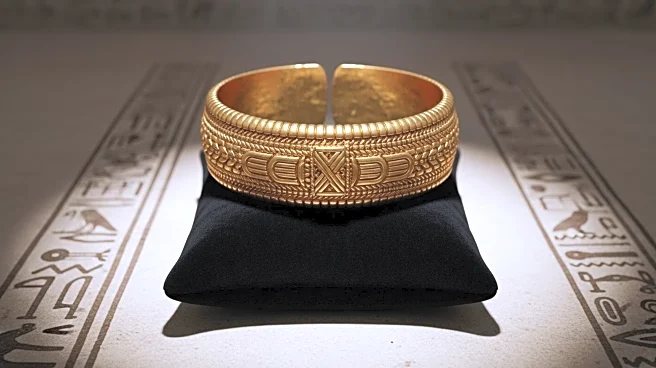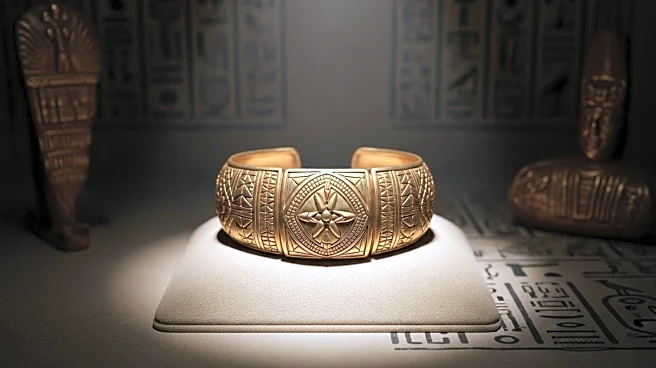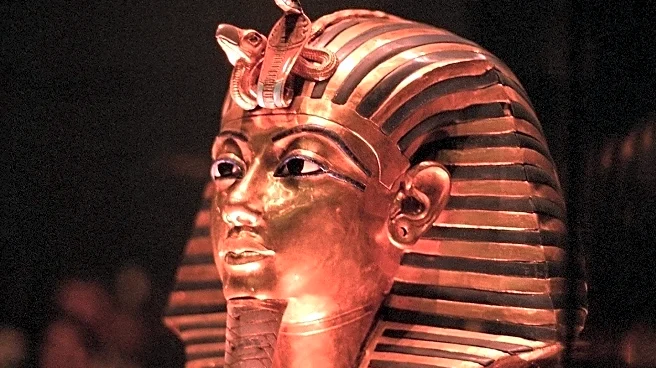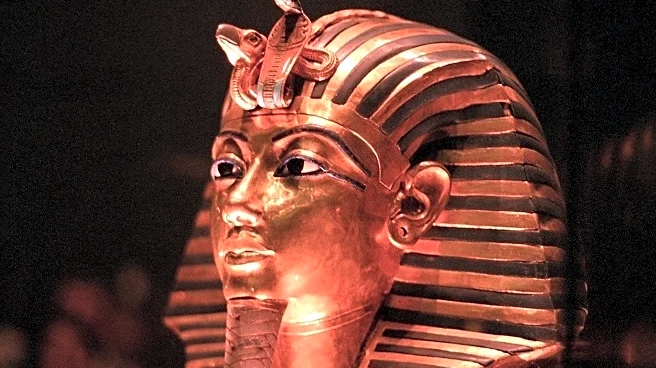What's Happening?
A 3,000-year-old bracelet belonging to Pharaoh Amenemope was stolen from Cairo's Egyptian Museum and melted down for gold, causing public outrage in Egypt. The theft occurred on September 9, while museum staff were preparing artifacts for an exhibition in Italy. The bracelet, made of gold and lapis lazuli, was taken from a restoration lab lacking security cameras. Four suspects, including a museum restoration specialist, have been arrested. The bracelet was sold through a network of traders before being melted down. The incident has sparked criticism of museum security and calls for improved protection of Egypt's cultural heritage.
Why It's Important?
The theft of the ancient bracelet highlights significant security lapses in protecting Egypt's cultural heritage, raising concerns about the preservation of historical artifacts. The incident has prompted calls for stricter security measures in museums and a reevaluation of how artifacts are safeguarded. The loss of such a valuable piece of history is a blow to Egypt's cultural identity and heritage, emphasizing the need for better management and protection of national treasures. The broader impact includes potential changes in museum policies and increased scrutiny of security protocols to prevent future thefts.
What's Next?
Egyptian authorities are likely to implement stricter security measures in museums to prevent similar incidents. This may involve installing surveillance cameras and enhancing security protocols for handling and storing artifacts. The investigation into the theft is ongoing, with further legal actions expected against the suspects. The incident may also lead to a reassessment of international exhibitions and the transportation of artifacts abroad. The focus will be on ensuring the safety and preservation of Egypt's cultural heritage, with potential collaborations with international museums to improve security standards.
Beyond the Headlines
The theft raises ethical and cultural questions about the protection of historical artifacts and the responsibilities of museums in safeguarding national heritage. The incident highlights the vulnerability of cultural treasures to theft and the need for global cooperation in preserving historical artifacts. The broader implications include potential changes in international museum practices and increased awareness of the importance of protecting cultural heritage. The situation also underscores the need for transparency and accountability in managing and securing historical artifacts.










